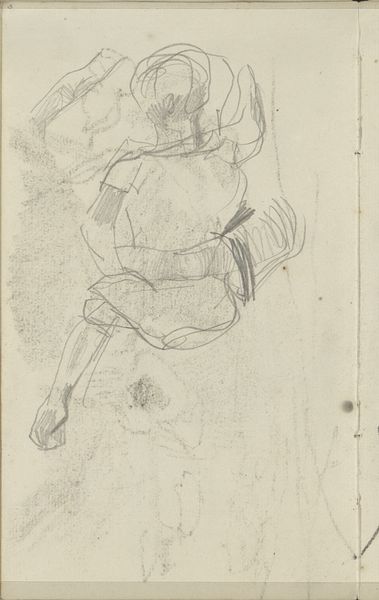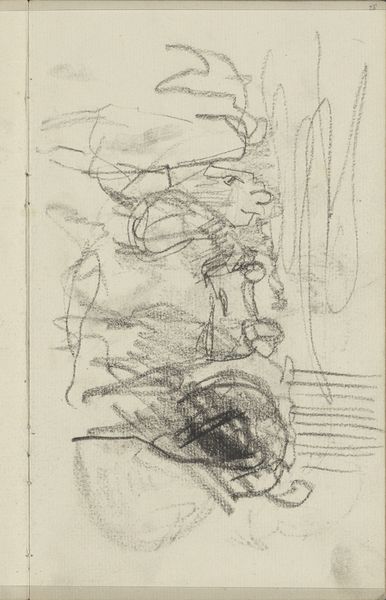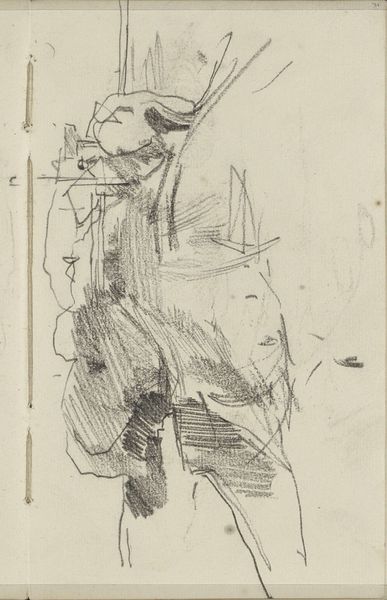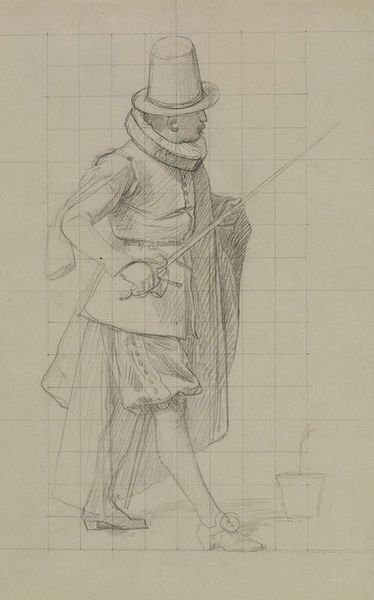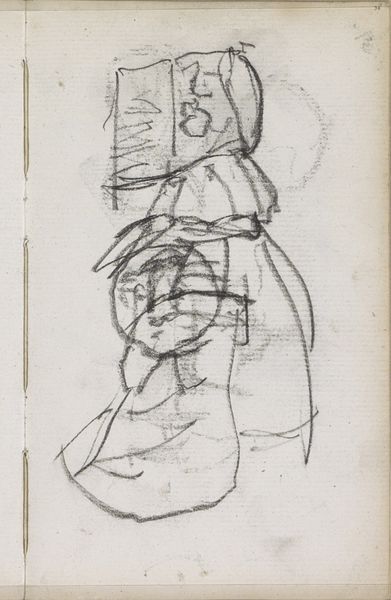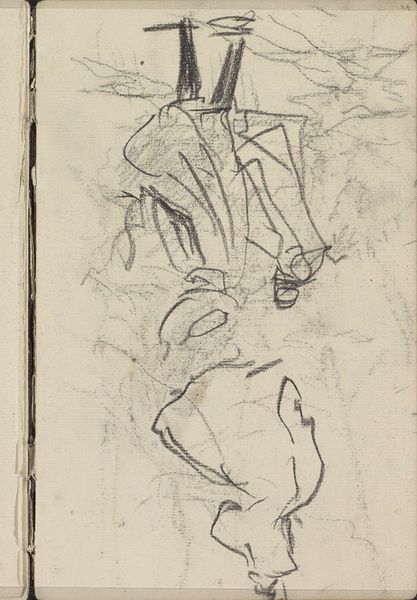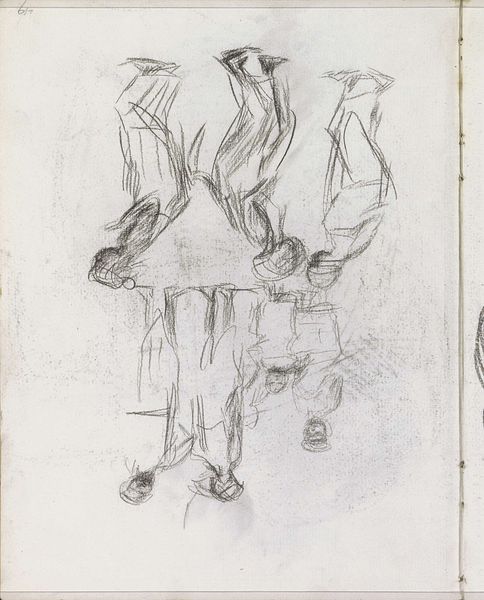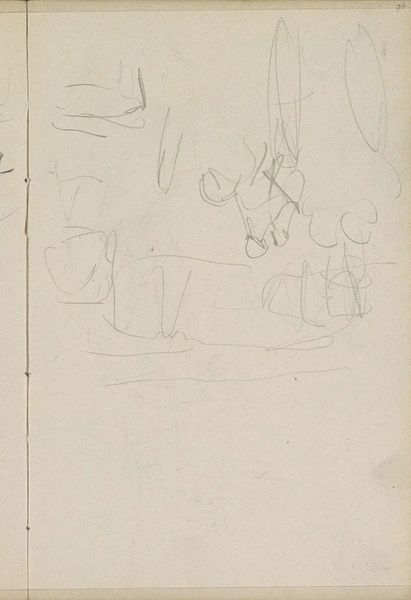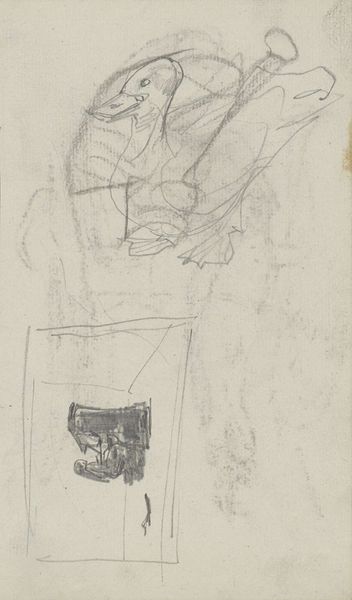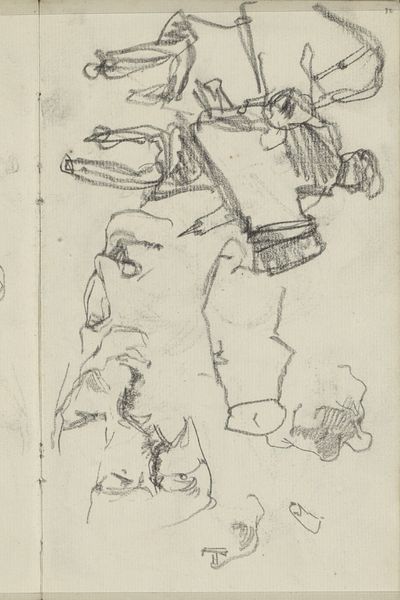
#
amateur sketch
#
light pencil work
#
pencil sketch
#
incomplete sketchy
#
personal sketchbook
#
idea generation sketch
#
detailed observational sketch
#
sketchbook drawing
#
sketchbook art
#
initial sketch
Dimensions: height 223 mm, width 160 mm
Copyright: Rijks Museum: Open Domain
Curator: This intriguing sketch at the Rijksmuseum is titled "Schetsen van een zittend kind" – Sketches of a seated child – and is attributed to August Allebé, created sometime between 1848 and 1927. It seems to be made from pencil on paper. Editor: My immediate response is its fleeting, almost ethereal quality. There's a real sense of captured movement, of a moment quickly jotted down. The child is incomplete, but that adds to the intimacy. Curator: It reminds me of those preliminary drawings in medieval manuscripts, glimpses of something sacred emerging. We have these ghostly outlines of the child's form—legs, arms, and even the potential for a face. They speak to the essence of childhood itself—always in process. Editor: And there’s a potential subversiveness here, too. Allebé created this at a time when childhood was becoming highly sentimentalized. To present a child in such a raw, fragmented way feels like a rejection of that. I wonder about the power dynamics at play; were they depicting the child with consent and consideration for autonomy, or merely viewing the child as a subject? Curator: That's a great point. It speaks to a shift in artistic consciousness where process is just as significant as product. Incomplete sketches have gained iconographic weight – a direct access into the artist's creative journey, rather than just an outcome. We’re invited into the Allebé’s workspace. Editor: I appreciate that this gives us room to interpret and to ask critical questions, especially about the unromanticized, perhaps unintentional depiction of children in art of that time. What kind of historical understanding might change the symbolic reading of it, regarding this portrayal? Curator: And I find myself contemplating how time transforms an artist’s initial, private exploration into something publicly viewable and preserved. It is a window to a past era but reflects our present gaze too. Editor: Definitely. A brief glimpse into an interaction of the past—re-contextualized with time and place. The sketchy, informal marks evoke thought. Thank you!
Comments
No comments
Be the first to comment and join the conversation on the ultimate creative platform.
